Simple, but essential lawn mower maintenance tips and procedures many homeowners can handle themselves. How to replace the spark plug, sharpen and balance the blade, and more.
When you finish cutting the lawn for the last time of the year, are you glad that chore is over for the next several months? Or do you mourn the passing of the warm weather season and hate to see lawn cutting come to an end?
Either way, you should take advantage of this time of year, and not merely forget about the mower. Not just yet, anyway.
Fall is a great time for a little lawn mower once-over, especially if it was behaving a little erratically during the year.
Minor, but vital lawn mower maintenance is well within the realm of anyone with average mechanical ability.
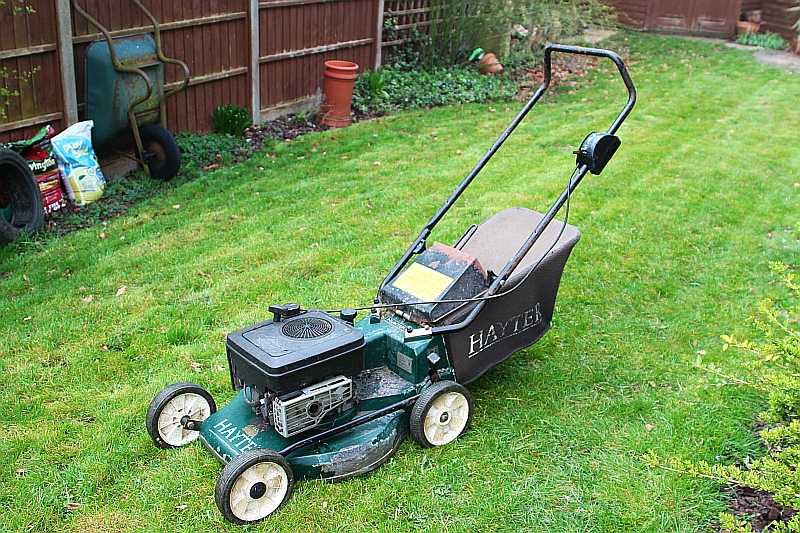
However, if you feel you’re not sure of yourself when it comes to this type of thing, by all means, take it in and have a repair shop handle it.
Lawn mowers can be dangerous if not maintained properly. If you decide to do it yourself, write down the make and model number of your mower.
It’s good to have when purchasing replacement parts. If you have your owner’s manual, so much the better.
Lawn Mower Maintenance Tips and Procedures
Always make sure the engine has completely cooled before performing any maintenance on the mower.
Some parts of the engine to get extremely hot during use, and a simple brush against one of them can cause a painful burn.
Also, there’s a chance some gasoline may leak out in the process, and you definitely don’t want any of that around a hot engine. So make sure everything’s cooled down.
Read Also:
- 5 Important Factors That You Need to Consider When Choosing a Landscaping Company
- Make Your Grass Greener: Learn How to Maintain Healthy Grass With These Tips
- Guidelines for Applying Fertilizer and Grass Seed at the Same Time
- Why You Should Hire a Lawn Care Service With Your Neighbors
- When is the Best Time to Water the Grass and Reasons Why
- 8 Reasons Why You Should Be Using a Push Reel Mower
- How to Take Care of Your Hand Garden Tools
- All You Need To Know About Grass Seeding
Spark Plug
A good place to start your lawn mower maintenance is the spark plug. If it hasn’t been replaced for some time, it needs to be.
Ideally, this should be done each year. Pull the wire off of the spark plug. Always grab it by the boot at the end of the wire, and never by the wire itself. It should pop right off.
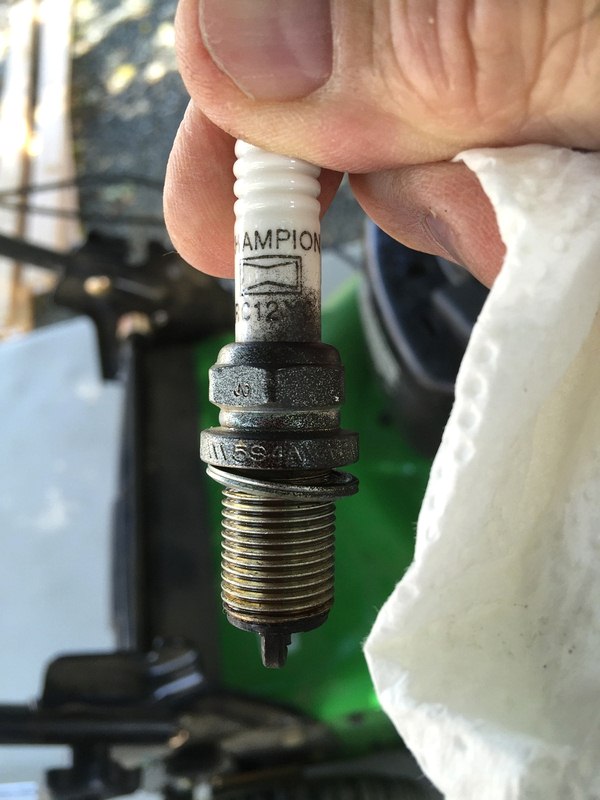
Note the size and number of the plug, and purchase an identical replacement.
Never, under any circumstances, attempt to remove or even touch the spark plug wire with the engine running. If there’s a crack in the wire somewhere, you can get quite a jolt.
You will need a ratchet and special spark plug socket of the correct size to remove and replace the spark plug. Ordinary sockets can crack the plug, rendering it useless.
You may see some cheap spark plug removal tool at the store, but I don’t recommend it – simply because it won’t last long, and you’ll end up back at the store anyway.
Might as well get a quality ratchet and socket the first time.
There are three additional items you may need; a spark plug gapping tool, the correct size air filter for your mower, and a blade balancer. An inexpensive plastic balancer will work fine.
Wipe Any Dirt
Wipe or blow off any grass, dirt, or other debris around the bottom of the plug before loosening it. You don’t want anything getting into the spark plug hole.
Don’t bother trying to re-gap or clean the old plug. It’s just not worth the effort. Mower spark plugs don’t cost much, and you’re always better off with a new one.
Check the Gap
Check the gap of the new plug and adjust it if necessary, using the gapping tool. The mower’s manual should tell you what the proper gap is.
Then insert the new plug carefully, making sure it’s going in smooth and straight.
If there is resistance, don’t try to force it. Take it out and try again. Forcing could damage the threads on the mower’s engine, and that means costly repairs.
Once it’s going in easily and straight, keep turning until it stops. Then, using the special spark plug socket, tighten it securely.
How to Sharpen a Lawn Mower Blade
The mower’s blade more than likely needs to be sharpened, and it can be done easily with a grinding wheel or file. A good way to tell if your blade needs sharpening is to examine your lawn.
Dull blades tend to tear the grass apart, leaving the tops of the grass blades looking ragged. A sharp lawn mower blade slices the grass cleanly, leaving a smooth cut.
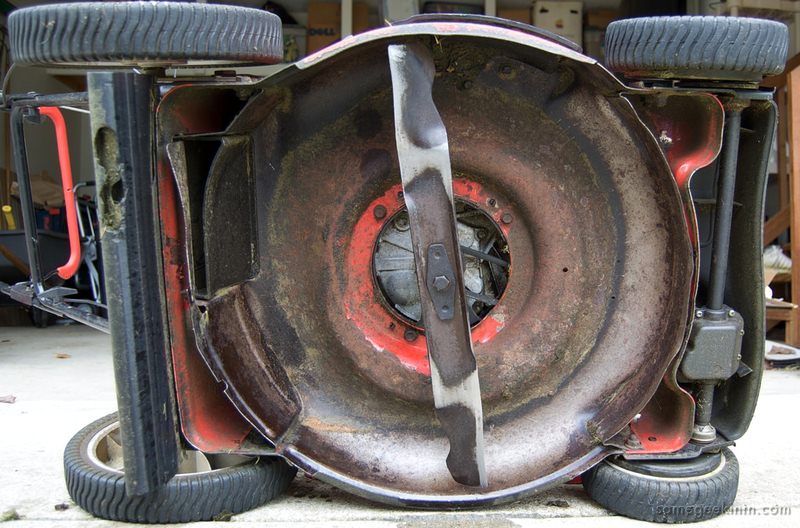
A Word of Warning:
The first step in removing the blade is to disconnect the spark plug wire. ALWAYS REMOVE THE WIRE FROM THE SPARK PLUG before working on the blade or underside of the mower!
And make sure the wire is moved away from where it cannot contact the spark plug. This will prevent accidental starting, which could cause serious injury.
Keep Cigarettes Away
No smoking is definitely in order here. Keep cigarettes and any other source of flame well away.
Tip the mower on its side (with the air filter facing up), and do it in a safe place outside the garage, but not on the lawn. Gasoline can leak from the tank when the mower is on its side, and it will kill grass rapidly.
Mark the Side of the Blade
Note how the blade is positioned on the mower (which side faces the bottom) before removing it.
It’s a good idea to mark the side of the blade facing you, so you can re-install it correctly. Any good wrench can be used to loosen the bolt and remove the blade.
You may have to use a wooden block to hold the blade still while loosening it. Be sure to note the position of anything else along with the blade, such as a washer and/or blade adapter.
Once the blade has been removed, get rid of any dead grass or other debris that may be clinging to it. The cutting edges can then be sharpened with the grinding wheel or file.
Not razor-sharp, however. Simply make clean, straight cutting edges that will slice the grass instead of tearing it. Sharpen the edges identically on both ends of the blade.
Then place the blade on the balancer. Unless you’re extremely lucky, it won’t be perfectly balanced. You’ll have to run the heavy end over the grinder slightly to even things out.
This may take several attempts – back and forth, one end and then the other. It doesn’t take much to throw the blade off balance.
Is the Balancer Really Necessary?
Wouldn’t it work to just place the blade on a nail sticking out of the wall instead? Well, lots of people do just that, but my experience (as well as many mower mechanics I’ve spoken with) has shown the balancer to be much more accurate.
Balancing the blade is an important step and should not be skipped. It makes life a lot easier for you and your mower.
An out-of-balance blade can vibrate excessively when the engine’s running. Excessive vibration can eventually take its toll on the rest of the mower, including the engine.
Balancing the blade will provide smooth, easy operation of the mower, and it’s well worth the little extra time it will take.
Before re-attaching the blade, scrape away all the dead, matted grass that has accumulated on the mower’s underside. A plastic putty knife is good for this.
This can (and should) be done often throughout the season, but it isn’t necessary to remove the blade every time. You can simply rotate the blade as needed.
Warning:
This is being repeated for an obvious reason. Make sure the spark plug wire is disconnected and cannot come in contact with the plug!
Re-attaching the Blade
After the blade is sharp and balanced, re-attach it to the mower, making sure it’s positioned properly, aligned with the crankshaft, and any parts removed are replaced in their original positions.
Tighten the blade securely. A loose blade could spell disaster. Check to be sure there are no obstructions, so the blade can spin freely.
Once you’re satisfied that everything’s fine, tip the mower back to its normal position and reconnect the spark plug wire.
How to Clean Lawn Mower Air Filter
Your mower’s air filter probably could stand to be replaced, and it’s not difficult to do. Check the mower’s manual for instructions on locating and removing it. It’s possible to clean it if it’s not in real bad shape, but it’s better to install a new one.
Clean the outside of the mower, and check the operation of handles, levers, cables, wheels – in other words, the entire machine.
Start the engine, let it run a few minutes, and then stop it. Remove the spark plug wire and double-check the blade and spark plug to make sure they are securely tightened.
Re-connect the spark plug wire and start it up again. If possible, let it run until the gas tank runs dry.
It’s always best to start off the spring season with fresh gasoline. Remember, never leave a mower unattended for any reason when its engine is running.
The Bottom Line
These steps are the basic lawn mower maintenance tips and procedures many homeowners can handle themselves. But remember, your mower is a complex machine, and oftentimes these minor tune-up steps will not be enough.
There is much more to keeping a lawn mower in tip-top shape, and it can get quite involved. Any additional repairs should be left to the professionals, and winter’s a good time to do it. And come next spring, your trusty mower will be ready, willing, and able to serve.
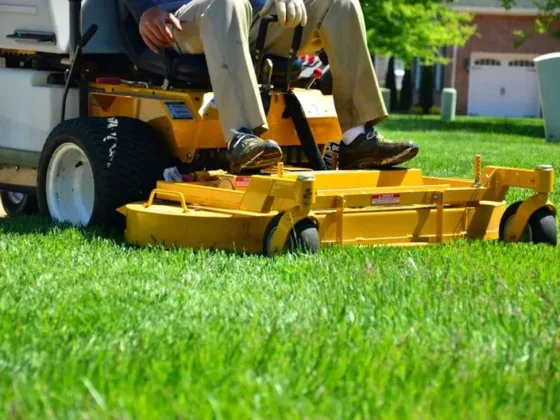


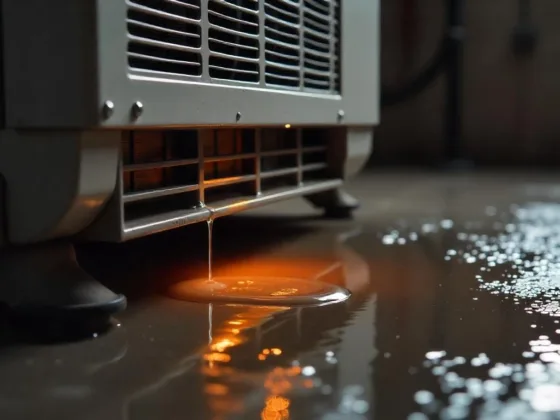






1 comment
Make sure the mower is safe to work on. Before you start to work on the underside of the mower make certain that the engine is unable to start, which is achieved by unplugging the spark plug wire. This is an effective method to stop the mower from starting-up unintentionally.